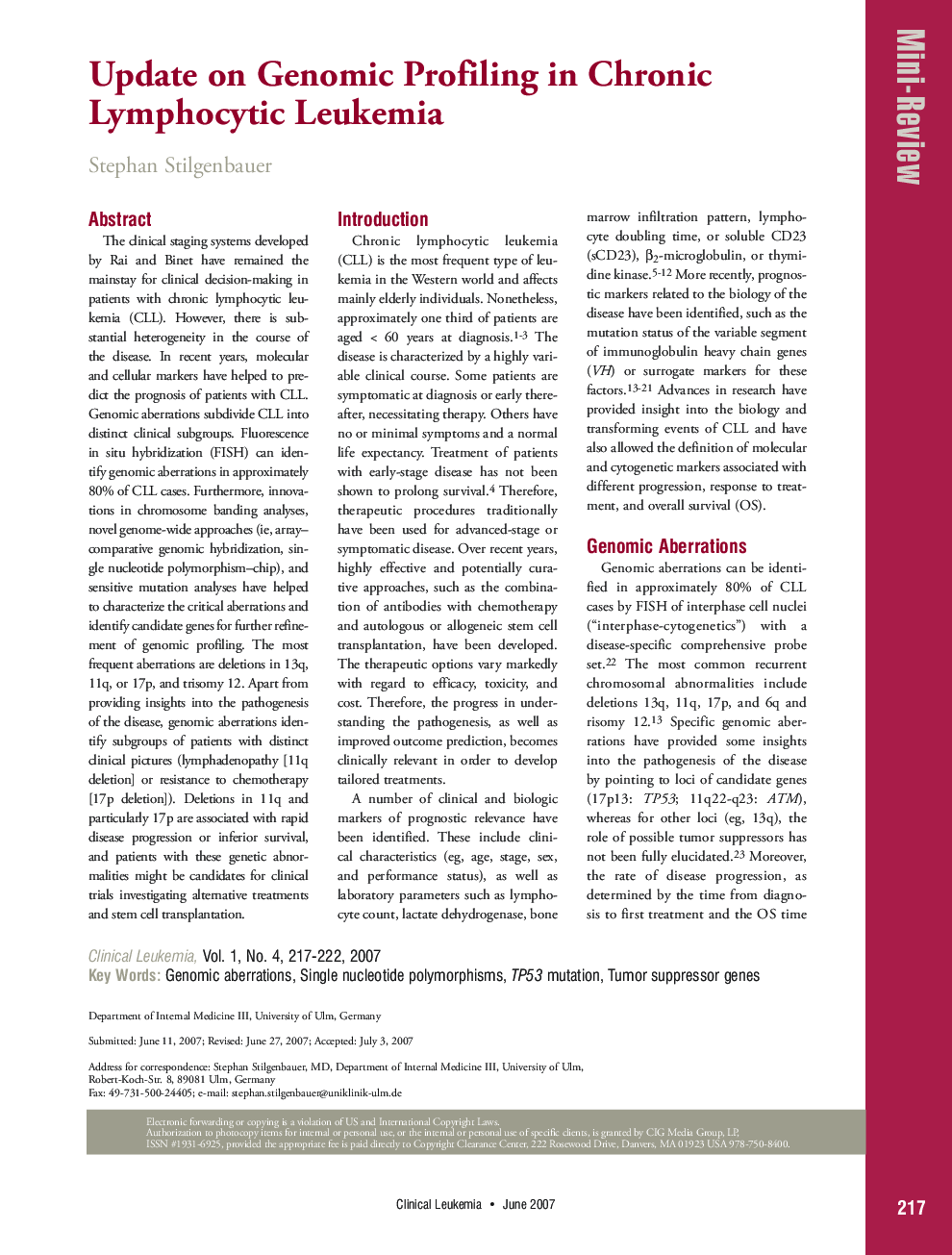| Article ID | Journal | Published Year | Pages | File Type |
|---|---|---|---|---|
| 3981013 | Clinical Leukemia | 2007 | 6 Pages |
The clinical staging systems developed by Rai and Binet have remained the mainstay for clinical decision-making in patients with chronic lymphocytic leukemia (CLL). However, there is substantial heterogeneity in the course of the disease. In recent years, molecular and cellular markers have helped to predict the prognosis of patients with CLL. Genomic aberrations subdivide CLL into distinct clinical subgroups. Fluorescence in situ hybridization (FISH) can identify genomic aberrations in approximately 80% of CLL cases. Furthermore, innovations in chromosome banding analyses, novel genome-wide approaches (ie, array– comparative genomic hybridization, single nucleotide polymorphism–chip), and sensitive mutation analyses have helped to characterize the critical aberrations and identify candidate genes for further refinement of genomic profiling. The most frequent aberrations are deletions in 13q, 11q, or 17p, and trisomy 12. Apart from providing insights into the pathogenesis of the disease, genomic aberrations identify subgroups of patients with distinct clinical pictures (lymphadenopathy [11q deletion] or resistance to chemotherapy [17p deletion]). Deletions in 11q and particularly 17p are associated with rapid disease progression or inferior survival, and patients with these genetic abnormalities might be candidates for clinical trials investigating alternative treatments and stem cell transplantation.
